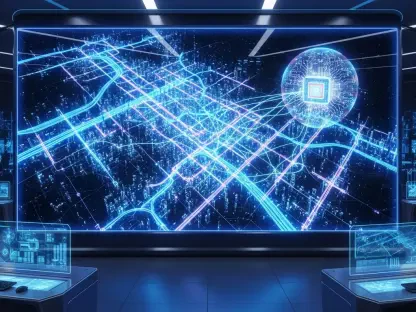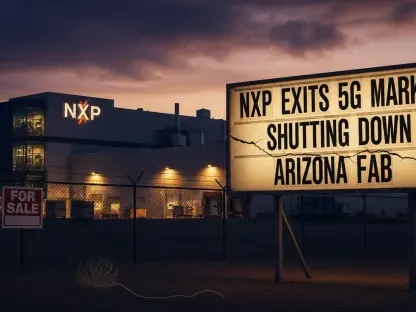In the heart of Indianapolis, the Martindale Brightwood neighborhood, a historically middle-class and predominantly Black community, finds itself embroiled in a contentious debate over a proposed 14-acre data center by Metrobloks, a developer based in Los Angeles. This project, slated for a brownfield site at 2505 N. Sherman Drive, has ignited strong opposition from locals who fear it may prioritize external profits over their well-being. The tension highlights a broader struggle faced by many urban communities navigating the influx of tech-driven development while striving to protect their interests and quality of life. At a public meeting held at Frederick Douglass Park, organized by One Voice Martindale Brightwood, residents articulated their apprehensions, setting the stage for a complex dialogue about economic impacts, environmental risks, and the essence of community-driven progress.
Community Concerns and Opposition
Economic Impacts and Lack of Benefits
The economic implications of the proposed data center have struck a nerve among Martindale Brightwood residents, many of whom live in a neighborhood where the median household income is a mere $24,000, significantly lower than Marion County’s average of $48,000. A primary grievance is the apparent lack of tangible benefits for the community, such as accessible job opportunities. While the project promises temporary construction roles, the long-term positions are expected to require high-level technical skills, likely excluding most local workers. Additionally, there’s a palpable fear that property taxes and utility costs could rise as a result of the development, placing further financial strain on households already grappling with economic challenges. This disconnect between the developer’s goals and the community’s needs underscores a profound concern that the neighborhood could be exploited for profit without receiving meaningful returns.
Beyond the immediate economic burdens, the opposition reflects a deeper frustration with development that seems misaligned with local priorities. Residents at the public meeting expressed disappointment that the data center might not contribute to addressing pressing issues like poverty or underemployment in the area. The sentiment is compounded by a sense that such projects often cater to external stakeholders—corporations and investors—while sidelining the very people who live in the shadow of these facilities. This economic disparity fuels a growing skepticism about whether the neighborhood will gain anything substantial, or if it will instead bear the hidden costs of a project that offers little in return for their sacrifice. The voices of Martindale Brightwood echo a demand for development that uplifts rather than overlooks their community.
Environmental and Health Risks
Environmental concerns form another critical pillar of resistance to the data center in Martindale Brightwood. The chosen site, formerly the Sherman Drive-In Theater, is classified as a brownfield, raising alarms about potential contamination and pollution risks that could affect residents’ health and safety. Community members worry that disturbing the land could release harmful substances, a fear rooted in the historical industrial use of the area. Without comprehensive environmental studies completed, there’s a lingering uncertainty about what hazards might lie beneath the surface and whether adequate measures will be in place to protect the neighborhood from any adverse effects of construction or operation.
Compounding these worries is the issue of resource usage, particularly water, which is essential for cooling data centers. With no large water bodies nearby, residents question how Metrobloks plans to sustain the facility’s operations without straining local supplies. Although the developer has floated the idea of a closed-loop water system to minimize usage, the absence of a concrete sourcing plan leaves many unconvinced. This skepticism ties into broader national conversations about the sustainability of tech infrastructure, as communities across the country grapple with the environmental footprints of such projects. For Martindale Brightwood, the lack of clarity on these matters intensifies the perception that their health and environment might be secondary to corporate interests.
Project Details and Developer Response
Scope and Nature of the Data Center
Delving into the specifics of Metrobloks’ proposal reveals a project that, while smaller than other regional initiatives like a 400-acre Google data center planned elsewhere in Indianapolis, still carries significant implications for Martindale Brightwood. The 14-acre facility is designed to lease space to multiple tenants, potentially including hospitals, cell phone companies, and gaming storage providers. This multi-tenant model aims to maximize the site’s utility, leveraging existing industrial zoning, power availability, and fiber connectivity. However, the developer’s acknowledgment that no specific tenants have been secured yet adds a layer of uncertainty, leaving residents to wonder who exactly will occupy the space and what impacts they might bring to the neighborhood.
Further complicating the picture is the nature of the economic footprint this data center is expected to leave. Metrobloks has highlighted the potential for temporary construction jobs during the build phase, alongside state tax incentives that could indirectly benefit the broader region. Yet, the admission that permanent roles will demand specialized skills not widely held in the local workforce has dampened hopes for meaningful employment opportunities. This gap between the project’s scope and its direct relevance to Martindale Brightwood fuels a narrative of exclusion, where the community might host a modern tech hub but gain little from its presence. The lack of firm commitments or partnerships only deepens the mistrust surrounding the initiative.
Developer Promises and Community Engagement
In response to mounting concerns, Metrobloks CEO Ernest Popescu has attempted to address some of the community’s apprehensions, particularly around environmental sustainability. The proposal of a closed-loop water system is presented as a solution to minimize resource consumption, a nod to the growing scrutiny of data centers’ environmental impacts. Additionally, Popescu has committed to conducting further environmental studies to evaluate the brownfield site’s safety, aiming to reassure residents that health risks will be mitigated. However, with details on water sourcing and study timelines still vague, these promises are met with cautious skepticism by a community seeking concrete assurances rather than preliminary ideas.
Engagement with the neighborhood remains a focal point of Metrobloks’ strategy, as evidenced by their participation in the public meeting at Frederick Douglass Park. This forum allowed for direct dialogue, though many attendees left feeling their voices were heard but not necessarily heeded, as opposition was met with supportive cheers from peers. The developer has pledged future meetings to continue the conversation, recognizing that building trust is essential for the project’s advancement. Yet, the challenge lies in translating these engagements into actionable outcomes that reflect resident input. For Martindale Brightwood, the effectiveness of this ongoing dialogue will likely determine whether the data center can move forward without alienating the very community it seeks to inhabit.
Local Governance and Broader Implications
Role of City Leadership
Navigating the divide between economic development and community sentiment, City-County Councilor Ron Gibson represents a pivotal voice in the debate over the Martindale Brightwood data center. Initially inclined to support the project due to potential economic benefits like tax incentives and temporary job creation, Gibson has since emphasized the importance of resident feedback. His commitment to deferring to neighborhood leaders suggests a recognition that local buy-in is crucial for any development to succeed sustainably. This balancing act reflects the delicate role of city leadership in mediating between corporate proposals and the needs of constituents who may feel sidelined by such initiatives.
The broader implications of Gibson’s stance highlight a critical tension in urban governance: how to foster growth without sacrificing community trust. His previous support for larger tech projects in Indianapolis indicates an openness to innovation-driven progress, yet the unique socioeconomic context of Martindale Brightwood demands a more tailored approach. The councilor’s insistence on inclusive decision-making could set a precedent for how similar proposals are handled in other neighborhoods facing industrial development. As this situation unfolds, the actions of local leaders will likely shape public perception of whether the government prioritizes corporate interests or the voices of those most directly impacted.
Community Agency and Historical Context
At the core of the opposition in Martindale Brightwood is a powerful push for agency in shaping the neighborhood’s future, a sentiment deeply tied to historical inequities. This community, which recently certified a quality-of-life plan with the city to address local priorities, has long felt overlooked in urban planning decisions. Residents are not merely resisting change but demanding that development aligns with their vision for a thriving, equitable neighborhood. The data center proposal, seen as an external imposition, reignites frustrations over past patterns where benefits accrued elsewhere while burdens fell on local shoulders, amplifying calls for projects that directly uplift rather than exploit.
Reflecting on this historical context, the current pushback serves as a reminder of the systemic challenges faced by marginalized urban areas. The neighborhood’s socioeconomic struggles, marked by a stark income disparity compared to the county average, intensify the stakes of this debate. Residents’ insistence on transparency and tangible benefits from Metrobloks mirrors a broader movement among similar communities nationwide to reclaim control over their environments. Looking back, the dialogue that unfolded at Frederick Douglass Park captured a pivotal moment where Martindale Brightwood stood firm, advocating for a future where their well-being was not an afterthought. Moving forward, the resolution of this conflict will hinge on whether future engagements can bridge the gap between development goals and community aspirations, ensuring that progress does not come at the expense of those who call this neighborhood home.









